A baroque pearl is a pearl that’s known for its unique, irregular shape – unlike your typical round pearl. So, what is a baroque pearl? In a nutshell, it’s a pearl that accepts its flaws, which makes each one exquisitely distinct. Baroque pearls are growing in popularity among jewelry designers and consumers due to their uniqueness. Over the past years, demand for these pearls has grown as shoppers seek jewelry that reflects individuality and character. Many jewelry collections now feature baroque pearls, and a reliable Pearl supplier often stocks these special pearls to meet the rising interest in their natural beauty.
Baroque pearls stand out because they don’t have a perfectly round shape. Each one is special, catching the light with a variety of colors and textures, showing off the pearl’s natural beauty. These unique pearls are formed naturally inside mollusks.The nacre grows unevenly around something inside, making odd shapes. They cost less than round pearls but are still liked for their creative look in jewelry. To pick real baroque pearls, check for strong shine and unique shapes. Look for natural textures on the surface. Always buy from sellers you trust.
What Is a Baroque Pearl
Baroque pearls are easy to identify because they are unlike typical pearls, they have irregular shapes – bumps, curves, or uneven spots. Experts explain that these pearls grow in unusual or lopsided ways, often because of how they form inside the mollusk. Both natural and cultured pearls can be baroque, but you’ll find the vast majority of natural pearls are baroque in shape.
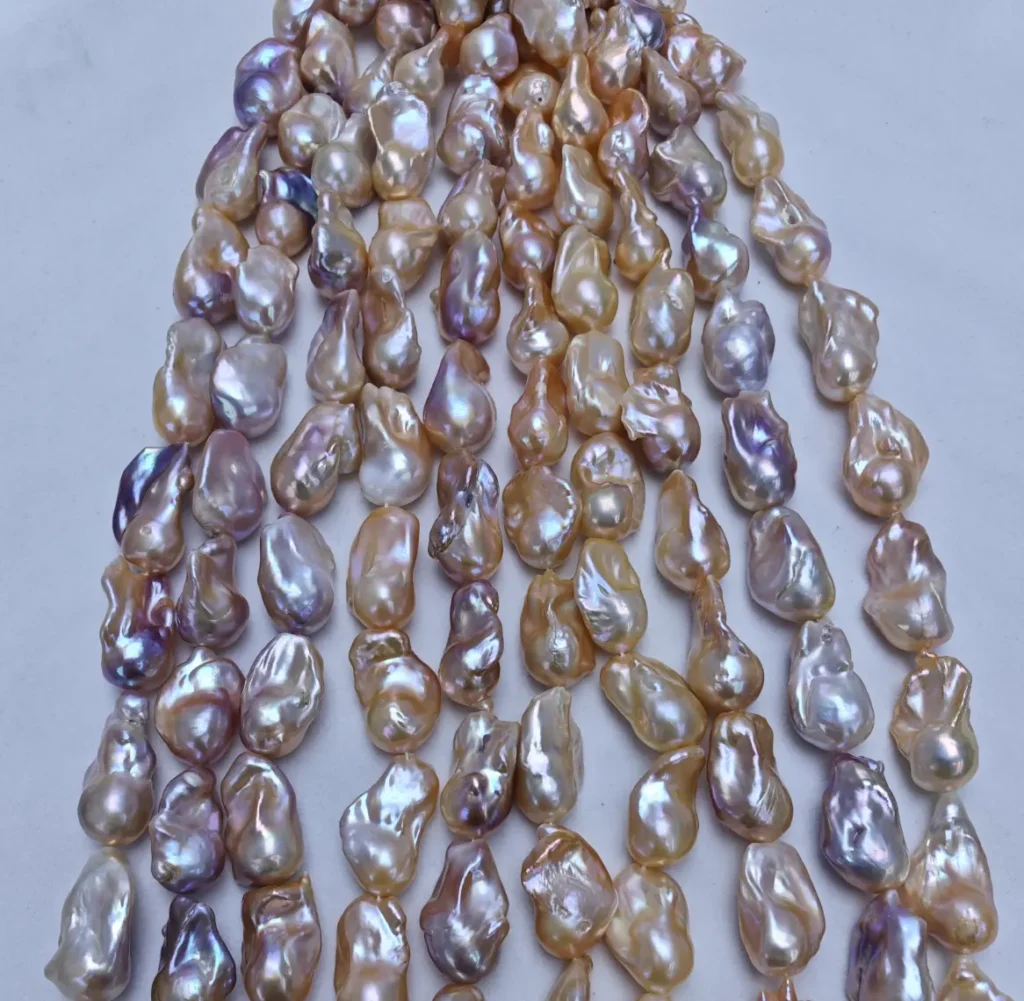
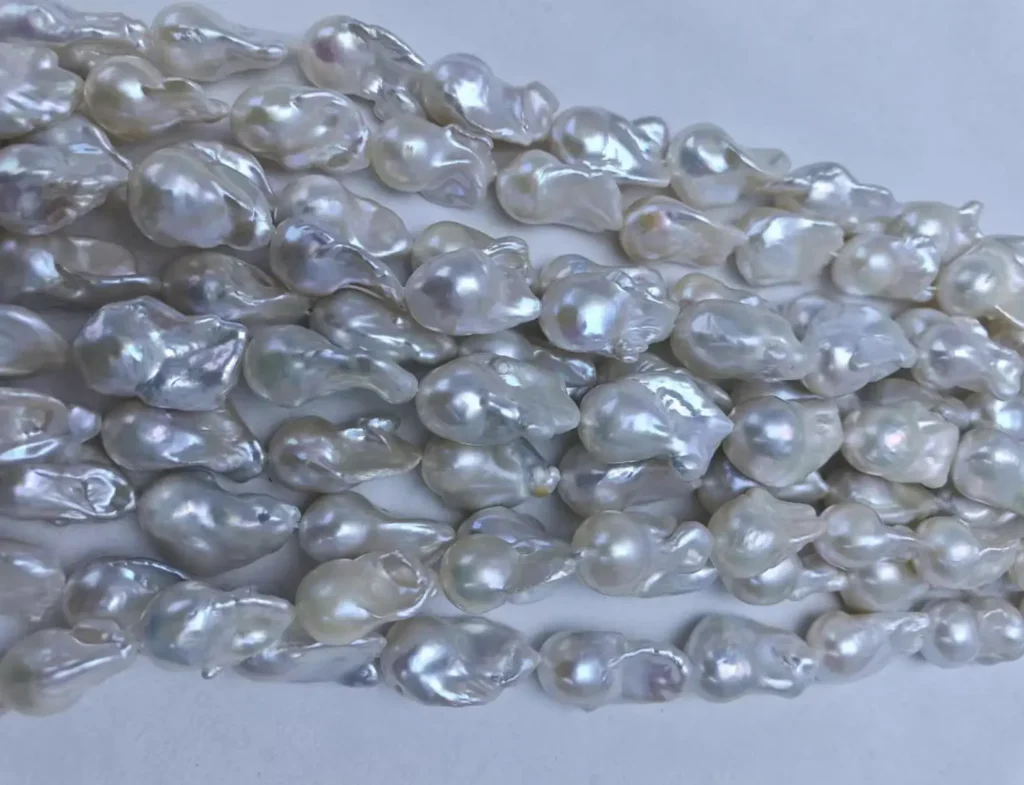
- Baroque pearls usually have thicker nacre, so they last longer.
- Their bumpy surfaces bounce light in cool ways, making them shine.
- When assessing pearls, jewelers take into account luster, color, size, and surface quality, but shape is the most important consideration.
- Small flaws are normal and add to each pearl’s distinct personality.
- Instead of striving for consistency across all pieces, jewelry designers who use baroque pearls give priority to color and shape harmony.
What is a baroque pearl? They come in many types, such as coin pearls, stick pearls, teardrop pearls, and Keshi pearls. Each type has its own distinct look and feel. Baroque pearls often have a higher luster than round pearls, which makes them perfect for people who want jewelry that stands out. When people discover baroque pearls, they learn that these gems truly celebrate natural beauty and individuality.
Note: Baroque pearls are loved for being different. Their flaws make every pearl one-of-a-kind.
The Portuguese word “barroco,” which refers to an imperfect pearl, is where the word “baroque” comes from. The term “baroque pearl” dates back to a French dictionary from the 17th century, which also happened to be the time that these pearls became increasingly popular in jewelry design. It’s interesting to note that the name also references the Baroque Era, which is known for its elaborate architecture and artwork.
- The word “baroque” also comes from the Italian word “barocco,” which meant strange or tricky ideas.
- In Spanish, “barrueco” also meant pearls that were not regular.
- Over time, “baroque” came to mean anything that is not classic or normal.
- The link to pearls shows their odd shapes, just like the bold style of Baroque art.
When people ask what is a baroque pearl , people learn that the name honors the value of individuality. According to the word’s history, these pearls have long been prized for their unique forms and inherent beauty.
Features of Baroque pearls
Fact 1: Shapes and Textures
Baroque pearls are typically not round, have many types of baroque pearls. Their shapes are free-form and wild. Some have a long, flat, or teardrop-like appearance. Some resemble coins, sticks, or even wings. Uneven growth of nacre produces these shapes.
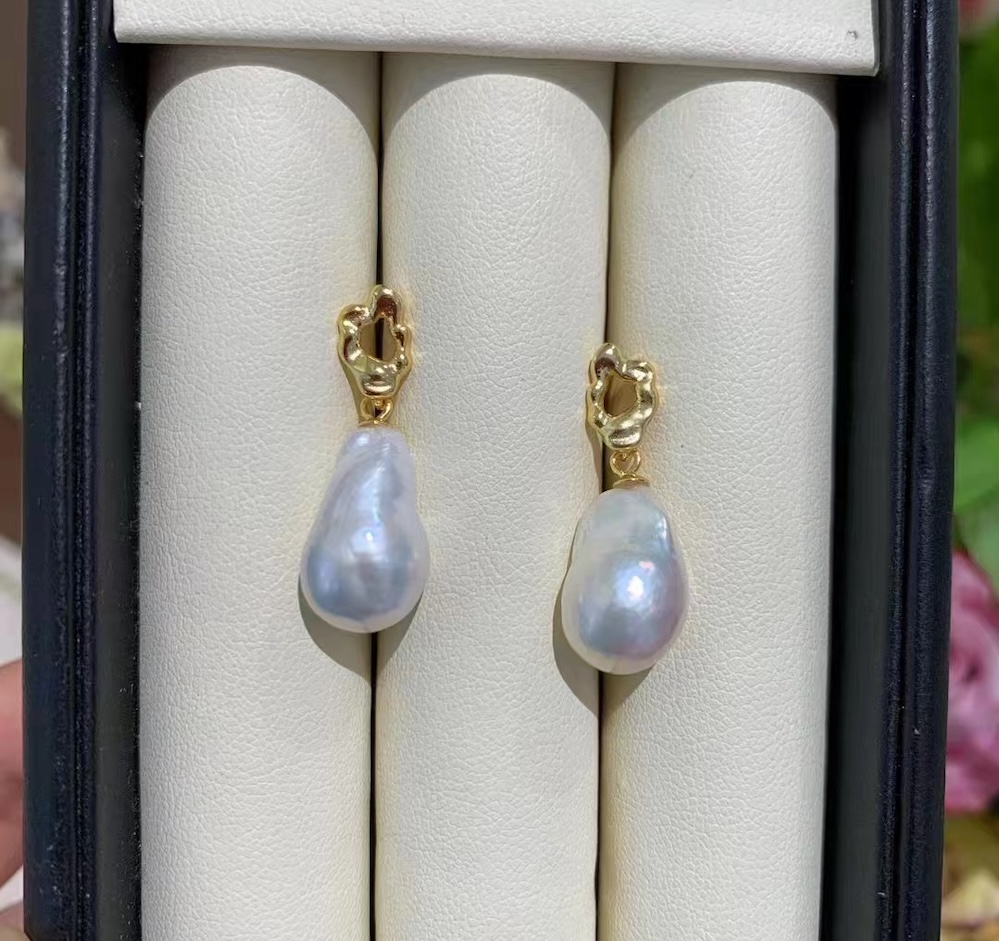
Baroque pearls usually have:
- Shapes that are not round
- Flat, long, or teardrop forms
- Surfaces with bumps, rings, or dimples
The thing that really makes baroque pearls stand out is their texture. Many have these little dimples, rings, or grooves, and you might even spot small cracks. These details make each pearl completely unique. Jewelry makers love using these shapes and textures to create really cool, modern pieces.
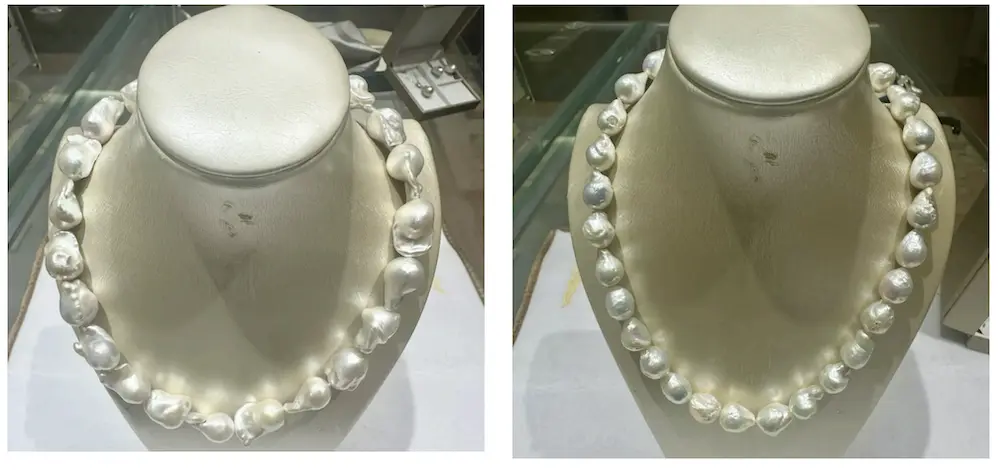
The uneven surfaces catch the light in interesting ways, which gives the pearls a real shimmer and depth. Designers often pair baroque pearls with things like metal or gemstones to create bold, eye-catching jewelry. Every piece feels one-of-a-kind, allowing people to really express their personality.
Note: The natural flaws in baroque pearls help artists make creative jewelry. These flaws make each piece special.
Fact 2: Colors and Luster
Baroque pearls come in many natural colors. Freshwater pearls can be white, pink, red, brown, purple, green, blue, cream, or yellow. White is the most common color. Many people also like pinks, roses, lavenders, and purples. The color depends on the mussel type, genetics, water, and where the pearl grows.
| Aspect | Details |
|---|---|
| Natural Color Range | Very light pink, purplish pink, orangy pink, brownish orange, brownish purple, brown |
| Luster Characteristics | Strong iridescence, shiny look, bright metallic reflections |
| Influencing Factors | Mussel type, shell color, water, and nutrients during growth |
Baroque pearls often have thick nacre layers. This makes them very shiny and gives a metallic look. Some types, like Keshi and circled baroque pearls, are super shiny and radiant! Their irregular surfaces bounce light all over the place, giving them a vibrant and beautiful look. You know how round pearls have that classic, polished look? Well, baroque pearls have this fantastic glow about them that really shows off their natural beauty, and it makes each and every one totally unique.
Fact 3: Formation of Baroque pearls
If you’re curious about what is a baroque pearl, you absolutely need to understand how they’re formed.
Natural Process
Within a mollusk, baroque pearls begin to grow. This occurs when a tiny object, such as sand, enters the soft area. The mollusk makes an effort to defend itself. It uses nacre to cover the irritant. The mollusk produces a smooth layer called nacre. It is made of aragonite and conchiolin. The mollusk keeps adding more nacre over time. This is how the pearl slowly forms.
- Something small gets into the mollusk’s tissue.
- The mollusk’s mantle covers it with nacre.
- More nacre layers build up to make the pearl.
- The pearl’s shape and size depend on the irritant and the mollusk.
- For cultured pearls, people put a bead or tissue inside to begin.
The environment affects how pearls grow. Their shapes are heavily influenced by factors like water temperature, salinity, and pollution, which can all change nacre growth. For example, colder water can lead to pearls with thin, shiny layers. Freshwater mussels can create many pearls at once, which often results in more baroque shapes. Saltwater oysters typically produce one pearl at a time, but even these can be baroque if conditions change.
Note: Pearls form because the mollusk protects itself. Nature decides what shape the pearl will be.
Why Shapes Are Irregular
Many things make baroque pearls have odd shapes. The irritant can move inside the mollusk. This makes nacre cover it in uneven ways. The nucleus shape, especially in cultured pearls, can also make strange forms. Sometimes, the mollusk reacts in new ways. This can make some spots thick and others thin.
- Nature and the environment cause odd shapes.
- The nucleus inside the mollusk changes the pearl’s look.
- The mollusk’s movement during growth changes nacre patterns.
- Water, salt, and food affect how nacre forms.
- Other things inside can make bumps and ridges.
Freshwater pearls often start with just tissue. This makes them have more bumps and ridges. Saltwater pearls use a bead, but they can still be baroque if things change. Every baroque pearl shows how it grew. Its shape tells the story of nature and its world.
Baroque vs. Traditional Pearls
Baroque pearls and traditional pearls are not the same. Baroque pearls have shapes that are not round. They can have bumps, dimples, or sharp ends. Each baroque pearl looks different from the others. Traditional pearls are always round and even. Their surfaces are smooth and look perfect. This gives them a classic style.
| Feature | Baroque Pearls | Traditional Round Pearls |
|---|---|---|
| Shape | Irregular, asymmetrical, freeform | Perfectly spherical and symmetrical |
| Structure | Solid nacre or mixed layers, can be larger | Nucleus with even nacre layers |
| Appearance | Organic, artistic, multifaceted luster | Uniform, smooth, classic luster |
| Subtypes/Varieties | Teardrop, oval, circled, abstract; many types | Mostly round, highly prized |
| Visual Appeal | Modern, unique, creative | Timeless, elegant, traditional |
| Value | More affordable, but unique ones can be valuable | More expensive due to rarity and demand |
Freshwater pearls often have baroque shapes. They form when a small piece of tissue is put inside the mussel. This makes pearls that are all nacre, so their shapes are more odd. Traditional saltwater pearls start with a bead inside. The mollusk covers the bead evenly, making a round pearl. Baroque pearls grow in a natural way. Their shape depends on the mollusk’s health and where it lives.
Collectors and designers like baroque pearls because they are special and look like art. Traditional pearls are still loved for their classic and even look.
Fact 4: Value and Rarity
Baroque pearl are much easier to find than round pearls, especially when it comes to freshwater pearls. Almost all baroque pearls you’ll find are cultured baroque pearls. Over 90% of freshwater pearls are baroque, which means that good ones are not rare. This abundance makes freshwater baroque pearls an excellent value for your money. Because there are so many, their prices are lower. For example, a 7mm strand of top-grade round Akoya pearls costs $1,200 to $1,800. Baroque pearls of the same size cost $400 to $600. Jewelry with baroque pearls usually sells for $69 to $189.
| Pearl Type | Shape Characteristics | Average Retail Price Range (2024-2025) | Value Premium Compared to Baroque Pearls |
|---|---|---|---|
| Traditional Pearls | Perfectly round, symmetrical | $1,200 – $1,800 (7mm AAA Akoya strand) | 40-50% higher than baroque pearls |
| Baroque Pearls | Irregular, non-spherical shapes | $400 – $600 (7mm equivalents) | Baseline (lower average market value) |
| Baroque Jewelry | Artistic designs, varied shapes | $69 – $189 (typical retail pieces) | Significantly lower than traditional pearls |
Saltwater baroque pearls, such as those from Tahiti or the South Sea, are much harder to find. But what is a baroque pearl from these regions? They can be quite valuable, especially if they have a brilliant luster and unique colors. Even though baroque pearls generally cost less, their popularity is on the rise. Their distinctive shapes and one-of-a-kind appearance appeal to collectors and those looking for something different from classic round pearls.
Genuine vs. Imitation
Gemologists have ways to tell if baroque pearls are real or fake. This is a really important thing to know when you’re learning about what is a baroque pearl. These tests help people buy the right pearls.
- Shape Observation: Real baroque pearls do not look the same. Each one has small differences. If all pearls look alike, they might be fake.
- Light Reflection and Overtone: Real pearls shine softly and show colors like pink or green. Fake pearls look dull and flat.
- Surface Texture (Rubbing Test): If you rub a real pearl on your teeth, it feels rough. This is because of the nacre. Fake pearls feel smooth or like glass.
- Weight Test: Real pearls feel heavier than plastic ones. But glass beads can be heavy too, so use other tests as well.
- Drill Hole Inspection: Look at the hole with a magnifying glass. Real pearls have neat holes and you can see nacre layers. Fake pearls may have messy holes or peeling.
- Reflection Test: Real pearls show moving reflections and a soft glow. Fakes have a bright, glassy shine.
- Advanced Professional Tests: X-rays can show growth rings inside real pearls. Magnifying glasses show natural layers. Some real pearls glow under UV light.
Tip: Using more than one test helps you know if pearls are real.
Choosing Baroque Pearls for Jewelry
Picking baroque pearls for jewelry means looking at some main things. The table below shows what to check:
| Criterion | Description |
|---|---|
| Size | Bigger pearls are more rare and stand out. |
| Luster | Pearls with strong shine look better and are worth more. |
| Shape | Special shapes make pearls look cool and different. |
| Surface Quality | Pearls with fewer marks are worth more. |
| Color | Classic colors are liked, but rare colors like pink or black can be worth more. |
| Origin | Natural pearls are harder to find and are often more wanted than cultured ones. |
When picking baroque pearls for jewelry, people should also think about:
- The style and quality of the jewelry.
- Buying from stores they trust to avoid fakes.
- Choosing pearls that fit their style and skin color.
- Baroque pearls let people have jewelry that is one-of-a-kind.
- Designers use baroque pearls in bold necklaces, chokers, and creative pieces. They mix them with metals or gems for a modern look.
Note: Baroque pearls give many creative choices, so every jewelry piece is special.
Baroque pearls are easy to notice because they have odd shapes, bright shine, and many colors. People who collect pearls like them because each one is different and has its own story. These pearls also have a long history and help artists make new jewelry ideas.
- Every pearl is special and shows its own shape. This lets people wear jewelry that matches their own style.
- Jewelry makers use baroque pearls to make bold and creative pieces. These pieces show off the beauty found in nature.
Baroque pearls show us that being different is beautiful. When people learn about baroque pearls, they find out these gems are all about being real and creative.
So, at this point, hopefully the question of ‘what is a baroque pearl?’ is no longer a mystery!
FAQs about baroque pearls
Is baroque pearl a real pearl?
Yes, baroque pearls do have value, with their worth influenced by factors such as luster, size, pearl type, color, and the uniqueness of their irregular shape.
Why are baroque pearls so cheap?
Baroque pearls are generally more affordable than perfectly round pearls because they are more abundant and less rare, especially in freshwater pearl harvests, where a higher percentage of pearls naturally form in irregular shapes.
What makes baroque pearls different from other pearls?
Baroque pearls have irregular shapes. Traditional pearls look round and smooth. Baroque pearls show bumps, curves, or unique forms. Each one looks different. Many people like them because they stand out in jewelry.
Can baroque pearls be natural or cultured?
Both natural and cultured pearls can be baroque. Natural pearls form in the wild. Cultured pearls grow with help from people. In both cases, the pearl can develop an uneven shape.
Are baroque pearls more affordable than round pearls?
Baroque pearls usually cost less than round pearls. Perfectly round pearls are rare and expensive. Baroque pearls are more common, so they often have lower prices. Some rare baroque pearls can still be valuable.
How should someone care for baroque pearl jewelry?
People should keep baroque pearls away from chemicals and perfumes. Wipe them with a soft cloth after wearing. Store them in a soft pouch or box. Pearls can scratch easily, so keep them separate from other jewelry.
Do baroque pearls come in different colors?
Baroque pearls show many colors. They can be white, pink, purple, gold, or even black. The color depends on the type of mollusk and the water where it grows. Some pearls show more than one color at once.


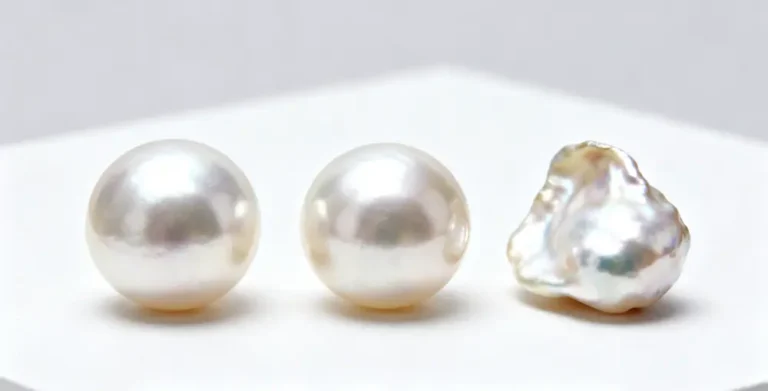
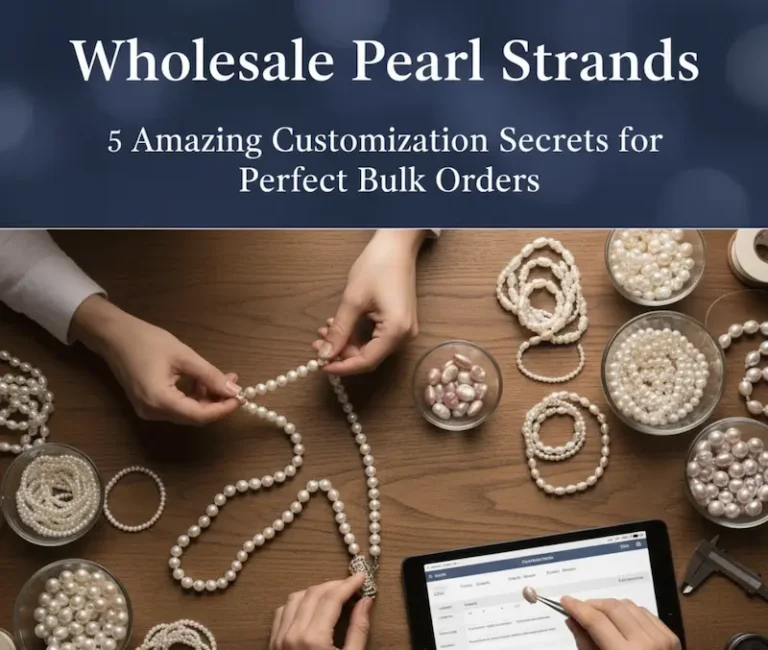
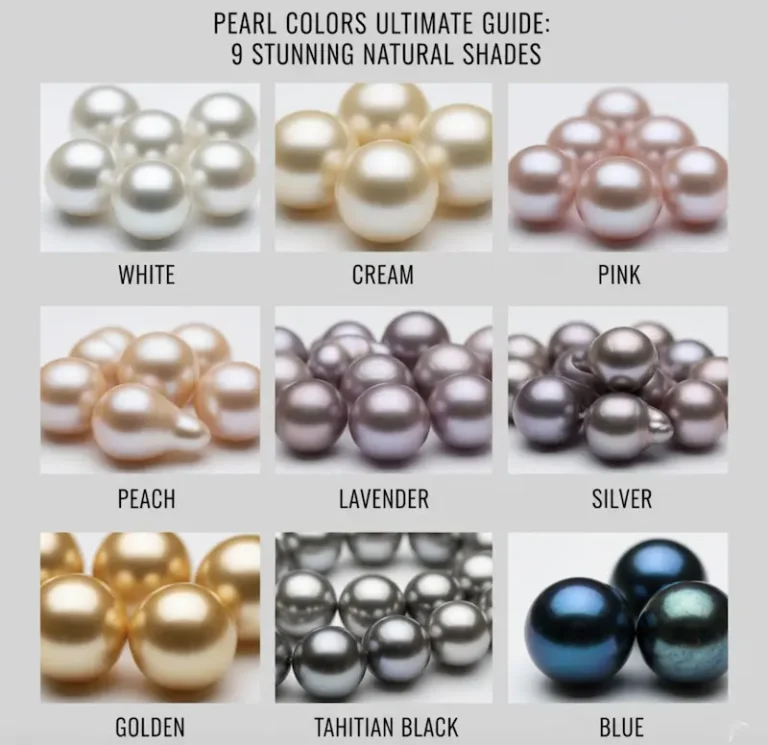


2 Comments